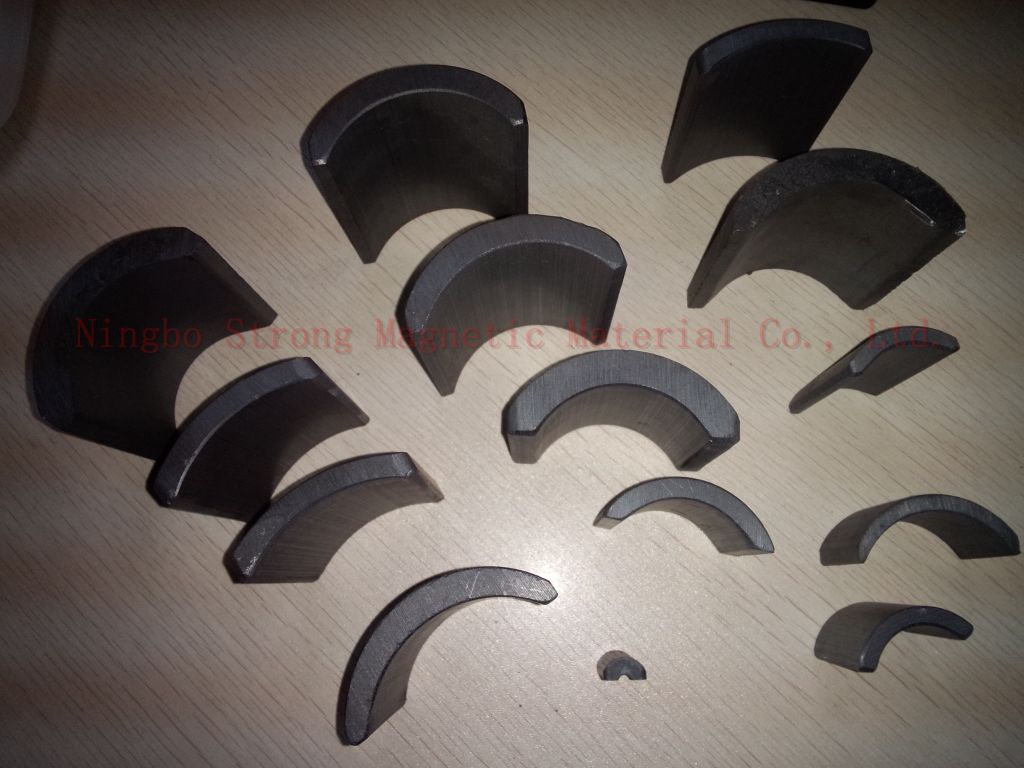
FOB Price
Get Latest Price0.1 ~ 10 / Piece
|Minimum Order
Place of Origin:
-
Price for Minimum Order:
Minimum Order Quantity:
10 Piece
Packaging Detail:
magnets are packed in cardboard boxes lined with styrofoam and bubble wrappers , boxes will be placed
Delivery Time:
8-16days
Supplying Ability:
100000 Piece per Month
Payment Type:
T/T, Western Union
連絡先担当者 johnson
haoru building, Ningbo, Zhejiang
ManufacturingÂ
Pressing and sintering involves
pressing very fine ferrite powder in a die, and then sintering this
pressed magnet. All fully dense Ferrite magnets are produced this
way. Ferrite magnets can be wet pressed or dry pressed. Wet
pressing yields better magnetic properties, but poorer physical
tolerances. Generally, the powder is dry for grade 1 or 5
materials, and wet for grade 8 and higher materials. Sintering
involves subjecting the material to high temperatures to fuse the
pressed powder together, thus creating a solid material. Magnets
produced through this process usually need to have some finish
machining, otherwise surface finishes and tolerances are not
acceptable. Some manufacturers extrude instead of press wet powder
slurry and then sinter the material. This is sometimes done for arc
segment shapes, where the arc cross-section is extruded in long
lengths, sintered, and then cut to length.
Â
Injection Molding:Â Ferrite
powder is mixed into a compound and then injection molded in the
same way as plastic.
Tooling for this manufacturing process
is usually very costly. However, parts produced through this
process can have very intricate shapes and tight tolerances.
Injection molded ferrite properties are either lower or about the
same as grade 1 Ferrite.
Â
Surface
Treatments
Â
The corrosion resistance of Ferrite is
considered excellent , and no surface treatments are
required.
However, Ferrite magnets may have a
thin film of fine magnet powder on the surface and for clean,
non-contaminated applications, some form of coating may be
required.
Â
Magnetizing and
Handling
Ferrite magnets require magnetizing
fields of about *0 kOe.
They can be magnetized with multiple
poles on one or both pole surfaces.
No special handling precautions are
required, except that large blocks of Ferrite magnets are powerful,
and care should be taken to ensure that they do not snap towards
each other.
Temperature
Effects
Up to about **0F, changes in
magnetization are largely reversible, while changes between **0F
and ***0Â F are re-magnetizable.
For all Ferrite magnets, the
degradation of magnetic properties is essentially linear with
temperature.
At **0Â F, about *5% of room
temperature magnetization is retained, and at **0Â F, about
*0% is retained.
Common Applications for
Ferrite Magnets
Ferrite magnets are widely used in
motors, magnetic couplings, for sensing, loudspeakers,
holding-magnet systems, crafts, magnetic therapy, novelties, and
toys